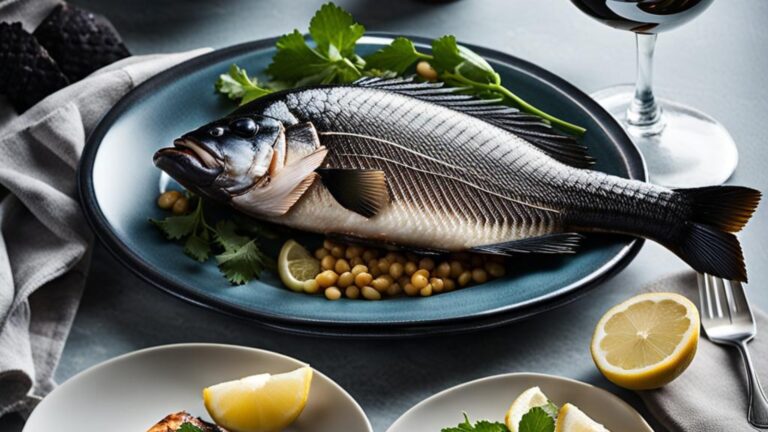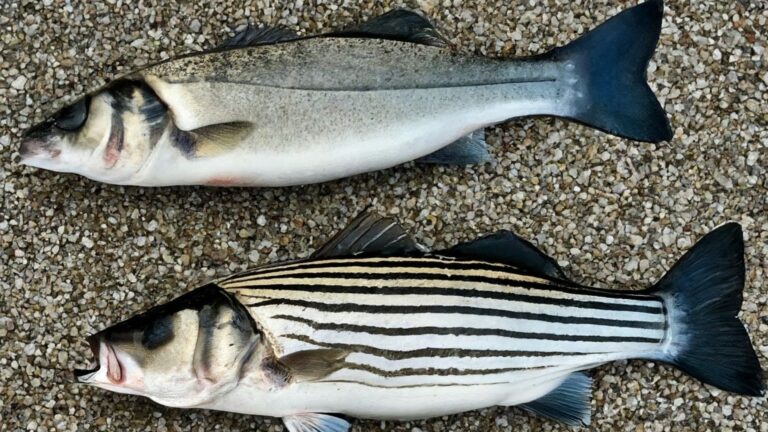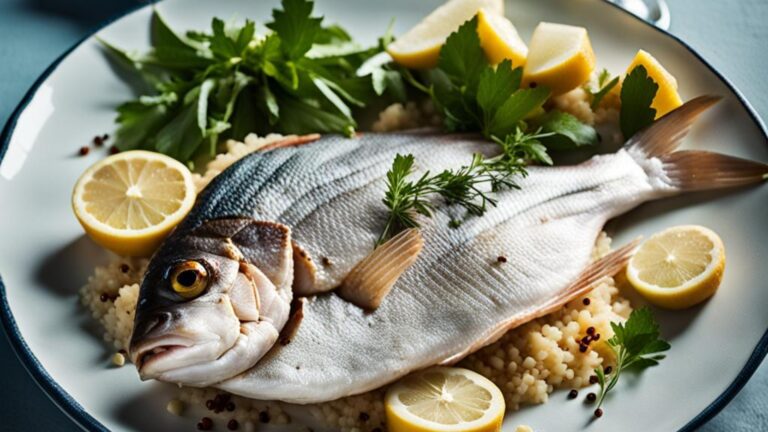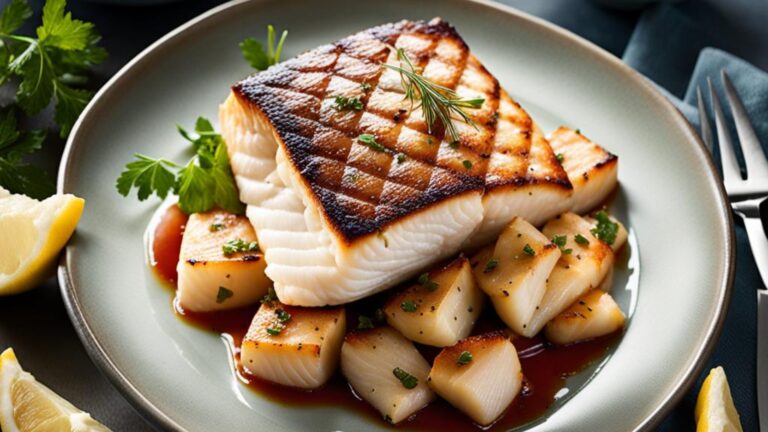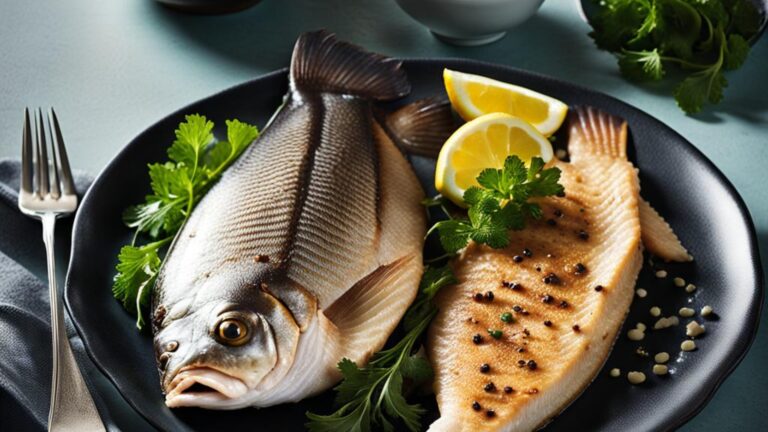
Red Sea Bream and Red Snapper are popular edible fish. Sea Bream has a mild, delicate flavor, while Red Snapper offers a slightly sweeter taste.
Both are versatile for cooking, but Sea Bream is smaller.
Greetings, fellow seafood enthusiasts! Today, I take you into the captivating world of oceanic delights as we explore the distinct realms of Red Sea Bream and Red Snapper. These piscine wonders have captured palates and imaginations alike.
From taste profiles to nutritional values, I will explain the depths of their essence, allowing you to savor a deeper understanding of these aquatic treasures.
An Overview
Let me show you how these two prized fish species differ from flavor to culinary versatility. They have both similarities and differences.
| Characteristic | 10-20 pounds, 30 – 120 cm | Red Snapper |
| Family | Sparidae | Lutjanidae |
| Native Regions | Northwest Pacific, South China Sea, northward to Japan | Gulf of Mexico, North America, Central America, and northern South America. |
| Size (Weight and Length) | About 50 pounds, 35 to 60 cm | Almond-shaped, with red eyes and dorsal |
| Body Shape | Oval-shaped body, a raised septum | Pink, gray, golden, silver |
| Coloration (Color) | Pink, gray golden, silver | Red with a dark fringe |
| Diet | smaller fish, crustaceans, and mollusks, such as clams, crabs, and shrimp | Shrimp, crab, worms, fish, cephalopods, and some plankton |
| As a Food | Versatile and delicious | Sweet and mild flavor |
| Served raw or grilled, steamed, poached, simmered in a sauce | Has a fresh, almost nutty flavor | |
| Popular Species | N/A | N/A |
| N/A | N/A | |
| Aquarium Friendly | Yes | No |
| Lifespan | 20–40 years | About 50 years |
Red Sea Bream vs Red Snapper: Detailed Differences
While researching, I noticed many differences between these two sea fishes. Here are several distinctive characteristics of these two fishes:

Family and Native Regions
Red Sea Bream belongs to the Sparidae family and is found primarily in the Northwest Pacific and South China Sea, extending northward to Japan.
In contrast, Red Snapper hails from the Lutjanidae family and is native to the Gulf of Mexico, North America, Central America, and parts of northern South America.
Size and Body Shape
The Red Sea Bream ranges between 10 and 20 pounds and 30 to 120 cm, with an oval-shaped body and a raised septum.
On the other hand, Red Snapper grows to about 50 pounds and exhibits an almond-shaped body with distinct red eyes and a dorsal ridge. While researching for this blog, I found that the biggest red snapper weighed 57 pounds.
Coloration
Red Sea Bream displays various colors: pink, gray, golden, and silver. In contrast, Red Snapper is aptly named for its vibrant red hue, often accompanied by a dark fringe.
Diet and Flavor
Red Sea Bream’s diet encompasses smaller fish, crustaceans, and mollusks such as clams, crabs, and shrimp. Its culinary appeal lies in its versatility and delightful taste.
Red Snapper’s diet includes shrimp, crab, worms, fish, cephalopods, and plankton, contributing to its sweet and mild flavor that’s often savored when served raw, grilled, steamed, poached, or simmered in a sauce.
Aquarium Compatibility
While Red Sea Bream can thrive in aquarium environments when provided with appropriate care, Red Snapper is less suitable for captivity due to its specific habitat requirements.
Lifespan
The longevity of these fish also sets them apart, with Red Sea Bream living between 20 and 40 years, while Red Snapper can reach an impressive lifespan of about 50 years.
Red Sea Bream vs Red Snapper: As a Food
When it comes to culinary pleasures, both Red Sea Bream and Red Snapper offer distinct experiences that tantalize the taste buds.
Red Sea Bream
This fish presents itself as a versatile and delectable option. Its delicate, tender flesh lends itself well to various cooking methods.
Its mild flavor adapts gracefully from grilling to poaching to diverse culinary creations. Its clean taste is often served raw in sashimi, showcasing the epitome of freshness.
When cooked, the Sea Bream’s flesh turns flaky and succulent, making it a canvas for many seasonings and sauces. Its flavor profile tends to be gentle, allowing the accompanying ingredients to shine while providing a pleasant seafood essence.
Red Snapper
This seafish brings a slightly sweeter and richer taste to the table. The flesh of the Snapper is renowned for its firm texture and ability to hold up to robust flavors.
It takes well to grill, bake, or fry, maintaining its distinct taste even when paired with bold spices and sauces.
Red Snapper’s slightly nutty undertone enhances its overall appeal, creating a harmonious balance between the fish’s innate sweetness and the savory elements it’s prepared with.
Similarities Between Red Sea Bream and Red Snapper
There are not just differences but also many similarities between Red Sea Bream and Red Snapper. Here are some key commonalities I noted for you:
- Culinary Appeal: Red Sea Bream and Red Snapper are sought after for their delectable taste and versatility.
- Texture and Firmness: Both species boast firm, flaky flesh that adapts well to various cooking methods. From grilling to baking, they ensure a delightful dining experience.
- Visual Allure: With their vibrant colors and appealing shapes, both fish capture attention on the plate.
- Health Benefits: Red Sea Bream and Red Snapper are rich sources of lean protein, omega-3 fatty acids, and essential nutrients, offering numerous health benefits when included in a balanced diet.
- Preparation Flexibility: Both fish lend themselves to various cooking techniques, allowing chefs and home cooks to experiment with flavors and textures to suit various culinary creations.
- Cultural Significance: Both species hold cultural significance in different cuisines worldwide, often serving as centerpieces in traditional dishes that showcase their unique qualities.
Nutritional Differences Between the Two Fishes
Now, let’s discuss these two foods based on their nutritional value. Along with distinctive profiles, each offers a unique array of essential nutrients:
Red Sea Bream contains 194 calories, while Red Snapper has 170 calories, and though both are rich in protein, Red Snapper surpasses 35 g compared to Red Sea Bream’s 19.9g.
The total fat content is slightly higher in Red Snapper at 2.9g compared to 0.8g in Red Sea Bream, with varying levels of saturated fat. Red Sea Bream has a significantly higher cholesterol content of 300 mg than Red Snapper’s 40mg.
While both provide essential nutrients, Red Sea Bream offers more iron (15mg) than Red Snapper, although Red Snapper leads in Vitamin B12 content (6μg vs. 3.78μg).
Nutritional Table
| Nutrient | Red Sea Bream | Red Snapper |
| Calories | 194 | 170 |
| Protein | 19.9 g | 35 g |
| Total Fat | 0.8 g | 2.9g |
| Saturated Fat | n/a | 0.3 g |
| Cholesterol | 300 mg | 40 mg |
| Sodium | 2300 mg | 97mg |
| Iron | 15 mg | 2.3% |
| Vitamin B12 | 3.78 μg | 6 μg |
Conclusion
With its mild, delicate flavor, Red Sea Bream beckons to those who appreciate culinary versatility.
Its tender flesh adapts effortlessly to various cooking methods, from grilling to poaching, offering a clean taste when served raw in sashimi.
Meanwhile, Red Snapper boasts a sweeter and richer taste, its firm texture thriving under bold flavors and robust spices.
Both these fishes enrich the diversity of seafood. If you have the opportunity, then you should try both. You will be delighted by the rich taste of both these fishes.
Let’s end it here now. See in the next comparative discussion of some other pairs.

